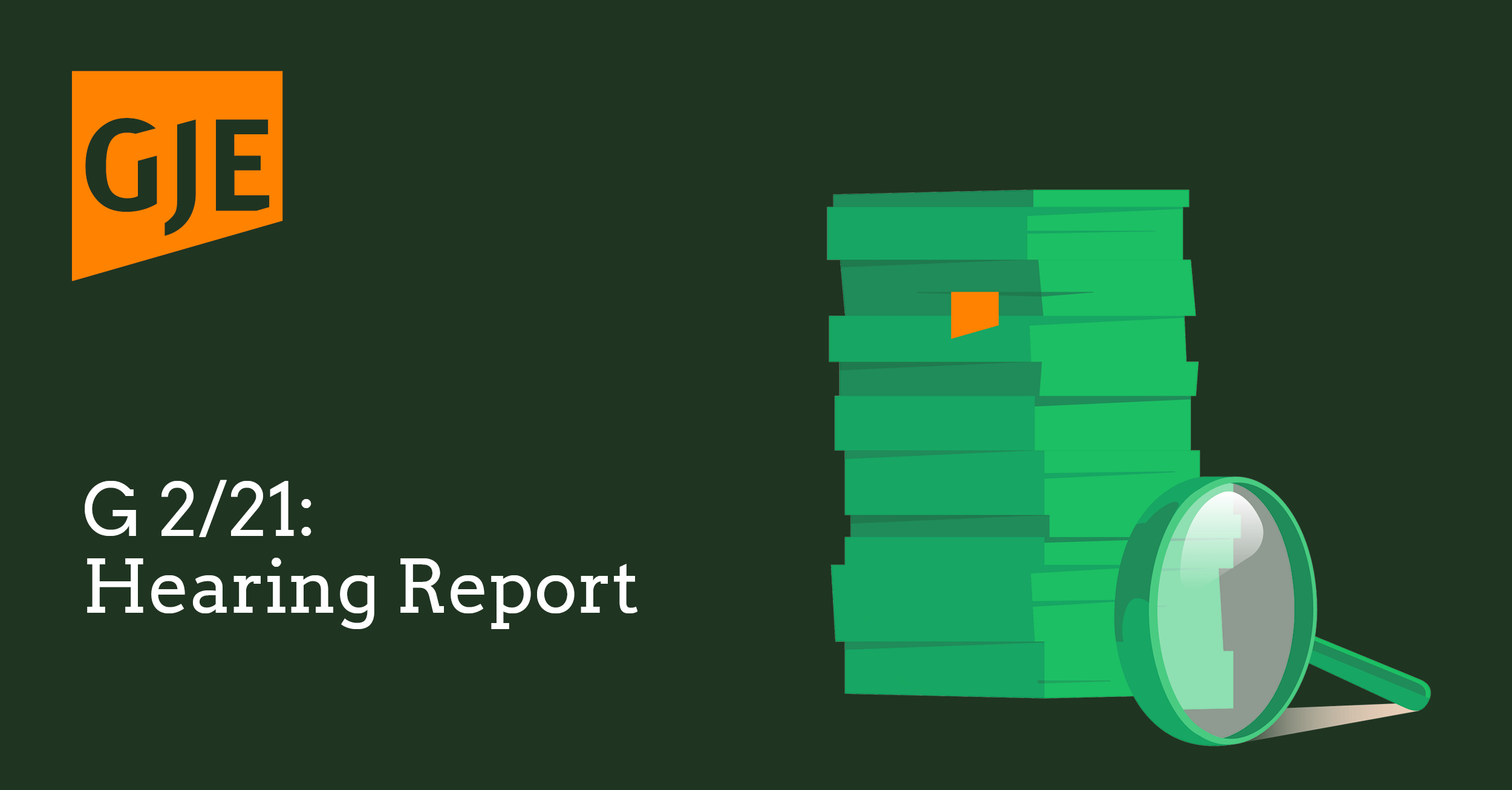
GJE Associate Ash Earl observed the eagerly anticipated G 2/21 Enlarged Board of Appeal hearing held on 24 November 2022. All sides provided considered arguments and some interesting points were raised, including what the perceived risks to the public might be if post-published evidence is taken into account in support of a technical effect.
There was thoughtful discussion on the circumstances in which a technical effect may be relied upon (or not) in view of the closest prior art. Here, all sides generally agreed with the established practice that any technical effect provided by the invention may be used, as long as that effect is derivable from the application as filed. This includes technical effects not explicitly mentioned in the application, so-called “new technical effects”, if they are implied by or related to the problem suggested in the application.
The Enlarged Board queried whether ab initio plausibility is compatible with the established practice of allowing applicants to rely on new technical effects to formulate the objective technical problem. The Enlarged Board also signalled concerns about the risk of ab initio plausibility having unequal consequences for the validity of patents in different technical fields.
Some attention was also dedicated to whether different standards could be applied in the contexts of sufficiency of disclosure and inventive step. While it seems unlikely that the Enlarged Board will answer this question, all sides made it clear that they expect guidance from the Enlarged Board as to how ab initio plausibility and ab initio implausibility should be tested.
The Enlarged Board did not provide a decision on the day but certain comments were made suggesting that they may answer the referred questions as follows:
- Should an exception to the principle of free evaluation of evidence (see e.g. G 3/97, Reasons 5, and G 1/12, Reasons 31) be accepted in that post-published evidence must be disregarded on the ground that the proof of the effect rests exclusively on the post-published evidence?
No, the principle of free evaluation of evidence does not permit post-published evidence to be disregarded per se.
- If the answer is yes (the post-published evidence must be disregarded if the proof of the effect rests exclusively on this evidence), can the post-published evidence be taken into consideration if, based on the information in the patent application in suit or the common general knowledge, the skilled person at the filing date of the patent application in suit would have considered the effect plausible (ab initio plausibility)?
Post-published evidence may be taken into consideration if the skilled person had no significant reason to doubt the technical effect: in other words, the evidence may be considered if the technical effect is not implausible ab initio.
- If the answer to the first question is yes (the post-published evidence must be disregarded if the proof of the effect rests exclusively on this evidence), can the post-published evidence be taken into consideration if, based on the information in the patent application in suit or the common general knowledge, the skilled person at the filing date of the patent application in suit would have seen no reason to consider the effect implausible (ab initio implausibility)?
Post-published evidence should not be taken into consideration if the skilled person had a significant reason to doubt the technical effect: in other words, the evidence should not be considered if the technical effect is implausible ab initio.
Where does this leave us?
Whether a technical effect is implausible will be decided upon the facts. A particular type of technical effect that may be difficult to square with the concept of implausibility is the unpredictable effect. Is the fact that the effect is unpredictable adequate to raise a significant reason to doubt the technical effect? If it were, then applicants would be unable to rely on post-published evidence to support an unpredictable effect. This would undermine the ability of applicants to adapt their technical effect when faced with a new prior art document. This could foreseeably have a significant impact in technical fields where unpredictable effects are common, such as chemistry and biotechnology.
Comments from the Enlarged Board, however, suggest that effects may not be considered implausible simply for being unpredictable. An example provided by the Enlarged Board was in the case of a claim to compounds which had been shown in the application to be useful in treating cancer. If prior art was then found which disclosed similar compounds also useful in treating cancer, the Enlarged Board asked the opponent why post-published evidence demonstrating that the claimed compounds provided lower side-effects (an unpredictable effect) should not be taken into account.
Next steps
We will be reporting as the case progresses, so connect with us on LinkedIn here and sign up here to receive further G 2/21-related news and insights. In the meantime, please contact Ash Earl here if you would like to discuss the potential relevance of G 2/21 to your business.


